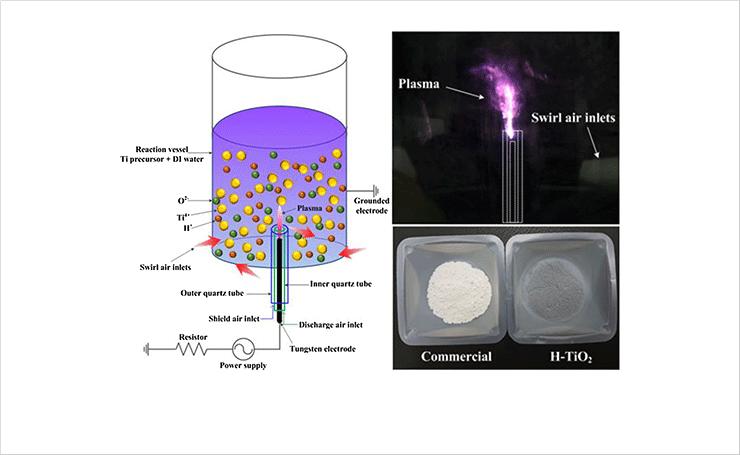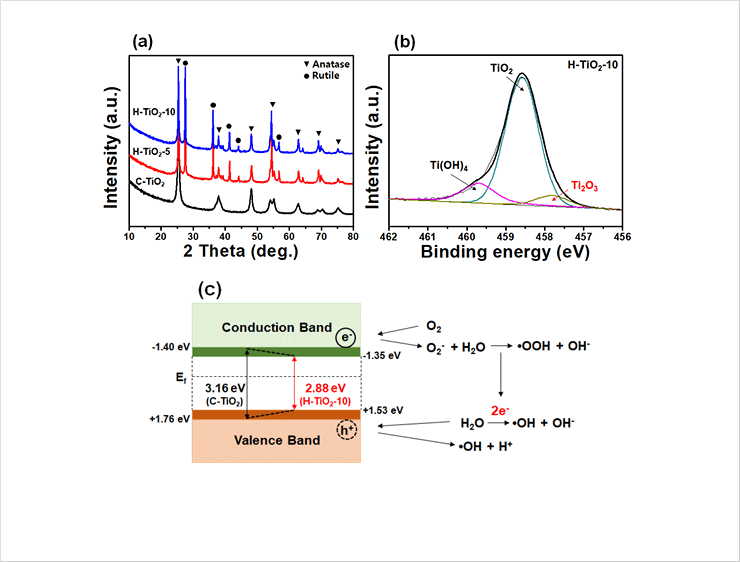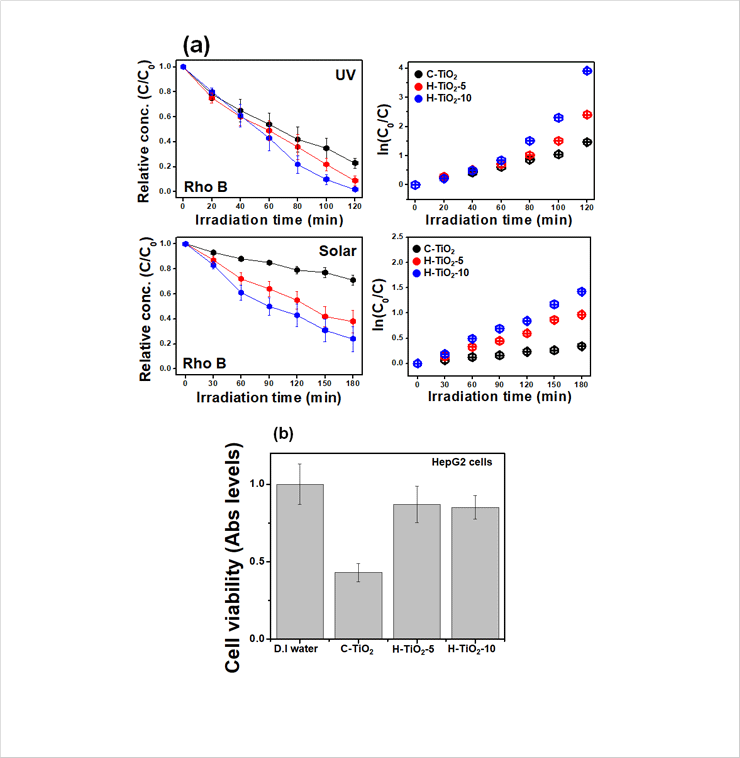Representative Research Publications
Studies on mass production and highly solar light photocatalytic properties of gray hydrogenated TiO 2018 > Representative Research Publications > Research Results Home
Studies on mass production and highly solar light photocatalytic properties of gray hydrogenated TiO2 sphere photocatalysts
- Journal of Hazardous Materials / 2018 September
- Hyun Uk Lee(Corresponding author)
Study Summary
It is first reported that gray hydrogenated TiO2 sphere photocatalysts (H-TiO2) with high reactivity to solar light are mass produced within a few minutes using an underwater discharge plasma modified sol-gel method at room temperature and atmospheric pressure. This plasma modified system is an easy one-step in-situ synthetic process and the crystallinity, hydrogenation, and spherical structure of H-TiO2 are achieved by the synergy effect between the continuous reaction of highly energetic atomic and molecular species generated from the underwater plasma and surface tension of water.
 Fig. 1. Schematic presentation of the experimental set-up for the synthesis of gray hydrogenated TiO2 sphere photocatalysts (H-TiO2).
Fig. 1. Schematic presentation of the experimental set-up for the synthesis of gray hydrogenated TiO2 sphere photocatalysts (H-TiO2).
The resultant H-TiO2 demonstrated high anatase/rutile bicrystallinity and extended optical absorption spectrum from the ultraviolet (UV) to visible range. Furthermore, various defects including oxygen vacancies and hydroxyl species on the TiO2 surface permitted the enhancement of the photocatalytic performance.
 Fig. 2. (a) XRD patterns to identify the crystalline properties of H-TiO2, (b) XPS spectrum to examine the chemical bonding states of H-TiO2 and (c) schematic diagram of the suggested photocatalytic mechanism of H-TiO2 photocatalysts under solar light irradiation.
Fig. 2. (a) XRD patterns to identify the crystalline properties of H-TiO2, (b) XPS spectrum to examine the chemical bonding states of H-TiO2 and (c) schematic diagram of the suggested photocatalytic mechanism of H-TiO2 photocatalysts under solar light irradiation.
It was demonstrated that H-TiO2 photocatalysts showed significant degradation efficiencies for reactive black 5 (RB 5), rhodamine B (Rho B), and phenol (Ph) under solar light irradiation, up to approximately 5 times higher than that of commercial anatase TiO2 (C-TiO2), which resulted in good water purification. Notably, it was also possible to cultivate HepG2 cells using such well-purified water (to degrees up to 76%), with minimal cytotoxicity. Considering all these results, we believe that this novel plasma technology is promising for important environmental applications.
 Fig. 3. (a) Removal of Rhodamine B (Rho B) by C-TiO2, H-TiO2-5 and H-TiO2-10 under UV- and/or solar-light irradiation. (b) Cytotoxicity of purified water by C-TiO2, H-TiO2-5 and H-TiO2 as analyzed by MMT assay using HepG2 (liver cancer cells, human) cell lines.
Fig. 3. (a) Removal of Rhodamine B (Rho B) by C-TiO2, H-TiO2-5 and H-TiO2-10 under UV- and/or solar-light irradiation. (b) Cytotoxicity of purified water by C-TiO2, H-TiO2-5 and H-TiO2 as analyzed by MMT assay using HepG2 (liver cancer cells, human) cell lines.



